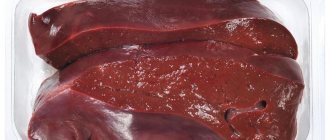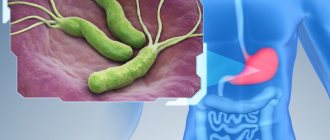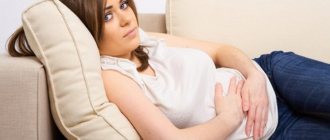Intestinal dyskinesia is a pathology caused by a decrease in intestinal tone and motor function. The main category of patients is women and children; intestinal dyskinesia is much less common in men. In women, gynecological diseases are added to the provoking factors common to all.
Problems of the pelvic organs cause disturbances in the motility of the digestive organs. Children suffer from this disease due to their excitability or hypovitaminosis, which has a detrimental effect on the growing body.
General information
Intestinal dyskinesia is a term that defines a complex of intestinal disorders that arise as a result of disturbances in the motor functions of the intestines. Mostly such disorders occur in the colon .
Intestinal dyskinesia is characterized by the absence of organic changes, but the organ cannot perform its functions normally. According to the World Health Organization, about a third of all people on the planet suffer from this disease. In most cases, the disease is typical for women.
Physiotherapy
Dyskinesia can occur in different parts of the intestine.
In the stage of moderate exacerbation of dyskinesia, the following procedures are possible:
- mud inductothermy. There are 10 sessions every other day, 15 minutes each. During the procedure, the effects on different sides of the large intestine are alternated;
- electrophoresis of dirt. Over the course of 10 sessions of 12 minutes each, a specific part of the colon is affected;
- mud application. Exposure to warm mud for 15 minutes, for 7 procedures;
- peat treatment. Every other day, for 15 minutes, warm applications are applied to the area of the large intestine;
- application of ozokerite or paraffin. Used in the form of panties for 30 minutes, in a course of 10 procedures;
- electrophoresis of calcium chloride or novocaine. They have an anti-inflammatory effect;
- inductathermy. Apply a special spiral within the abdomen for 10 minutes. The course consists of 10 sessions;
- microwave. Apply to specific areas of the intestines for 10 minutes. At least 10 procedures are required;
- UHF therapy – every other day, lasting 10 minutes.
But it is not always possible to carry out such procedures. Significant contraindications are:
- severe exacerbation of dyskinesia;
- uterine fibroids;
- prostate adenoma;
- intestinal polyposis;
- diverticulosis of the colon.
Physiotherapy for constipation is aimed at improving stimulation of the tone of the large intestine. Among them are: electrophoresis, electric shock and electropuncture.
Types of intestinal dyskinesia
In the case of spastic ( hypermotor ) intestinal dyskinesia, increased intestinal tone and spastic contractions are observed. The consequence of this condition can be constipation, as well as colic in the abdomen. If a patient has atonic ( hypomotor ) dyskinesia, then there is a sharp weakening of intestinal tone and motility. The consequence of this will be constipation, dull pain, a feeling of fullness, and in some cases intestinal obstruction . In turn, the consequence of constipation will be the accumulation of feces in the intestines, which leads to dizziness , weakness, nausea, and decreased performance. The contents of the intestines undergo rotting, and this can provoke an allergic reaction. Chronic constipation can cause hemorrhoids and anal fissures .
There are also primary intestinal dyskinesia, in which intestinal motor disorders are an independent disease, as well as secondary dyskinesia, which manifests itself as a symptom in other gastrointestinal diseases. However, it is quite difficult to differentiate these conditions.
Possible complications
Dyskinesia becomes aggravated by exacerbation of the conditions that provoked its appearance:
- cholecystitis;
- cholelithiasis;
- gastritis;
- pancreatitis.
Spastic colitis affects the patient’s usual lifestyle, reducing his social activity. A person withdraws into himself, becomes susceptible to apathetic moods and depression.
It is extremely rare to achieve full recovery. In most patients, symptoms persist all the time and worsen if preventive measures are not followed.
Causes of intestinal dyskinesia
It is generally accepted that primary dyskinesia most often manifests itself due to the influence of psychogenic factors. However, the disease often occurs as a result of excessive consumption of foods that are low in dietary fiber. Many experts tend to consider primary intestinal dyskinesia as a psychosomatic disease that develops as a result of acute and chronic traumatic moments, intrapersonal conflicts, and negative emotions. In addition, acute intestinal infections can serve as etiological factors for intestinal dyskinesia.
Secondary dyskinesia manifests itself as one of the symptoms of diseases of the digestive system. This may be chronic gastritis , liver disease , peptic ulcer , pancreatitis and cholecystitis . Also, such a violation is typical for diseases of the endocrine system. These are various pituitary disorders , diabetes mellitus , myxedema , hyperparathyroidism . Constipation often develops in people who abuse certain medications that have a direct effect on the motility of the large intestine. Such drugs include anesthetics , antibiotics , anticonvulsants , muscle relaxants , anticholinergics , psychotropic drugs , etc.
How is the treatment carried out?
The treatment of intestinal dyskinesia is approached in a comprehensive manner:
- Drug treatment.
- Help from a psychologist or psychotherapist.
- Physiotherapy.
In addition, the patient is often advised to make changes to his daily diet.
Medicines
- Antispasmodics are prescribed: nifedipine and its analogues.
- Preparations with polytropic action (no-spa, papaverine, gastrocepin, halidor).
- Indomethacin and other drugs that have absorbent, astringent and enveloping effects are prescribed against diarrhea. Imodium is often prescribed.
Folk remedies
Any “folk recipe” should be agreed upon with the attending physician who prescribed the course of medications. Not all drugs and the ingredients in them can be “friends” with each other.
Herbal infusion. Ingredients:
- peppermint;
- sage;
- motherwort;
- yarrow;
- St. John's wort;
- Oak bark.
2 tablespoons of the mixture are poured with boiling water and left for 2 hours. After you have strained the infusion, drink half a glass before eating 4 times a day
Recommendations during treatment:
What to avoid:
- exclude alcoholic drinks;
- drink less coffee and strong tea;
- exclude whole milk.
what you should start taking:
- more berry and fruit juices;
- you can take spike decoction;
- eat more rye bread.
Symptoms of intestinal dyskinesia
Intestinal dyskinesia is manifested by a number of unpleasant symptoms, which can vary significantly from person to person. First of all, patients are bothered by various pain sensations in the abdomen. It can be a cutting, aching, dull, boring pain that lasts several minutes or several hours. It is difficult for a person to say where exactly the pain is localized; he notes that such sensations appear “in the whole abdomen.” Painful sensations very often stop when a person falls asleep, and resume again after waking up. Some patients complain of an increase in the intensity of pain after eating, during stress or emotional upheaval. At the same time, after the release of gas or bowel movements, the pain subsides for many people.
In addition, symptoms of intestinal dyskinesia are noticeable bloating , various types of bowel movements, and constant rumbling in the abdomen.
In some cases, rumbling in the stomach and bloating are practically the only signs of the disease. These symptoms appear regardless of what food a person eats. Constipation is most often observed as a bowel disorder , which can sometimes be replaced by short-term diarrhea. In this case, some mucus may be released along with the stool.
However, in the presence of such disorders, in particular frequent diarrhea, a person does not lose weight, and sometimes there is even an increase in body weight. People who suffer from intestinal dyskinesia for a long time often experience some mental disorders: they are overly anxious, nervous, and easily fall into a depressive state. Sometimes patients note pain in the back or heart, but after examination it turns out that all these organs are healthy.
Diagnosis of intestinal dyskinesia
Due to the unclear localization of pain during intestinal dyskinesia, as well as symptoms similar to those of other diseases, it is difficult to diagnose intestinal dyskinesia based on the patient’s complaints, as well as his interview. Consequently, most specialists, faced with such an uncertain clinical picture, make a diagnosis based on the method of exclusion.
Differential diagnosis in this case is carried out in several stages. First of all, the doctor excludes some intestinal pathologies: tumors , polyps , diverticula , and other anomalies. Next, it is important to distinguish between dyskinesia and non-ulcerative colitis . After this, the specialist makes a differential diagnosis of the two types of dyskinesia, determining whether primary or secondary dyskinesia occurs. The causes of the disease are also determined.
To exclude the above diseases, a set of studies is carried out, used to examine patients with colon pathology. This includes scatological examination, irrigoscopy and endoscopy, stool examination for dysbacteriosis and occult blood. It is also important to perform colon biopsy
Very often, people suffering from intestinal dyskinesia are diagnosed with dyskinetic syndrome and dysbacteriosis . During endoscopy, organic changes are not detected. A normal histological picture of the intestine is observed.
After making a diagnosis of “intestinal dyskinesia,” the doctor is faced with another difficult step: it is necessary to determine what type of dyskinesia—primary or secondary—is occurring. In this case, it is important to determine the causes of the disease, so the doctor examines in detail the medical history and the results of a general clinical examination of the patient.
Prevention
To prevent the occurrence of intestinal dyskinesia, gastroenterologists recommend adhering to the following simple rules:
- Lead a healthy active lifestyle.
- Give preference to a balanced, nutritious diet.
- Try to avoid stress or learn to perceive it with restraint.
Spastic colitis is dangerous due to the development of characteristic complications, so timely consultation with a doctor at the first signs of the disease will help to quickly normalize the functioning of the gastrointestinal tract.
An annual preventive examination will allow you to identify pathology in time and prevent its development.
Diet, nutrition for intestinal dyskinesia
Diet Table No. 3
- Efficacy: therapeutic effect after 5-7 days
- Timing: constantly
- Cost of products: 1200-1300 rubles per week
Diet for the intestines
- Efficacy: therapeutic effect after 1-2 months
- Terms: from 1 month/permanently
- Cost of products: 1600-1700 rubles. in Week
Diet for indigestion
- Efficacy: therapeutic effect after 20 days
- Terms: from 2 months or more
- Cost of products: 1400-1500 rubles. in Week
If you follow the principles of the diet for intestinal dyskinesia, the disease bothers patients much less. First of all, all food should be boiled or steamed, and the food should not be chopped. To stimulate intestinal motility, you should include in your diet berries, fruits, and vegetables that have the ability to enhance the evacuation function of the intestines and do not cause fermentation and do not irritate the intestinal mucosa.
For different types of dyskinesia, it is necessary to follow a diet that corresponds to the type of intestinal motility. So, if a person suffers from hypomotor dyskinesia of the colon , then foods high in fiber should be included in the daily diet. First of all, these are vegetables - beets, carrots, cabbage, zucchini, tomatoes, herbs. At the same time, vegetables that contain a lot of essential oils are best excluded from the diet. These are onions, radishes, turnips, radishes, mushrooms. It is best to eat bread with bran, made from wholemeal flour; cereal porridge boiled in water is useful. The diet also includes soups, which should be cooked in low-fat and vegetable broths. Lean meat is allowed, fish, eggs can be eaten periodically, but no more than two pieces per day. In addition, you should consume fruit and vegetable juices, dried fruits, bananas and apples every day. The organic acids contained in these products help stimulate intestinal motility. Fermented milk products are no less useful, especially those that contain a live culture of bifidobacteria . In order to stimulate regular bowel movements, you should eat cold foods. You can consume wheat bran in its pure form for some time - it is recommended to eat it regularly for about six weeks. They should be poured with boiling water and can be consumed either on their own or added to a variety of dishes. This helps make bowel movements easier.
People who suffer from hypermotor dyskinesia are advised to regularly consume oils, both a variety of plant and animal oils. You should avoid baked goods, white bread, starchy foods, fatty meats, spicy and canned foods, strong tea and coffee. You also need to be very careful with products that contribute to increased gas formation. In the case of hypermotor dyskinesia of the colon, it is very important to follow a special slag-free diet that contains a lot of vegetable fats. At the same time, foods that contain a lot of fiber should be excluded, as they can cause increased spasticity and pain in the abdomen.
If intestinal motor functions improve, then you can gradually begin to introduce boiled vegetables into the diet, and later move on to the gradual consumption of raw vegetables.
Exercise therapy
Physical therapy can be done only after the exacerbation of dyskinesia has subsided. Before choosing a complex of health-improving gymnastics, it is necessary to determine the pathogenesis of the disease and the functional state of the intestinal smooth muscles.
When performing exercises, the impact is on the muscle tissue of the abdominal and abdominal muscles. Squats and jumps, bends and turns, imitation of riding and walking, bending, etc. – is an excellent set of exercises. Before you start exercising, you must have a consultation and get your doctor’s approval.
This video will tell you about diseases of the colon:
List of sources
- Maev I.V. Irritable bowel syndrome: a manual for doctors / I.V. Maev, S.V. Cheryomushkin. - M., 2012.
- Ivashkin V.T., Komarov F.I., Rapoport S.I. A short guide to gastroenterology. M.: M-Vesti Publishing House LLC, 2001.
- Callie E. Digestive system: diseases and their treatment. - St. Petersburg: Norint, 2000.
- Grigoriev P.Ya., Yakovenko A.V. Clinical gastroenterology. M., 1998.
- Gracheva N.M., Yushchuk N.D., Chuprinina R.P. and others. Intestinal dysbacteriosis, causes, diagnosis, use of bacterial biological preparations: A manual for doctors and students. M., 1999.










